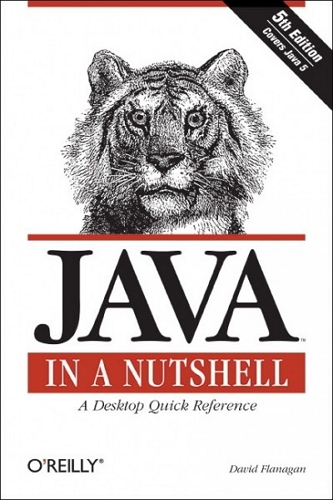
If the myMethod will throw an exception it will be handled in the calling method. But we still want to close the file, and placing the code that closes a file into the finally section will guarantee that it will be done.
Some people like visual design tools, but others don’t. If you prefer to program everything in Java without using Scene Builder and FXML, you can certainly do it. Below is the Java code of the Sign In window that I’ve written purely in Java without using Scene Builder.
If you write several catch blocks, you may need to place them in a particular order if these exceptions are inherited from each other. For example, since the EOFException is a subclass of the IOException, you have to put the catch block for the subclass first. If you would put the catch for IOException first, the program would never reach the FileNotFound or EOFException, because the first catch would intercept them.
It reads a big chunk of bytes from a file into memory (a buffer) in one shot, and the FileInputStream object then reads single bytes from there, which are fast memory-to-memory operations. BufferedOutputStream works similarly https://deveducation.com/ with the class FileOutputStream. This line starts a while loop that calls the method read(), which reads one byte, assigns its value to the variable byteCode, and compares it with -1 (the end of file indicator).

Now that we know how to link the controller’s event handlers to FXML components, the next question is how to read/write data from/to these components. In the case of the sign in application we need to know what ID/password the user entered and update the GUI from the controller accordingly.
Each byte in a file is represented by a code, which is a positive integer number. If you just need to read the data from some source, imagine that the data flows through a pipe into your program. If you need to write the data into storage, it’s another pipe where the data flow from your program to this storage.
The method sleep of class Thread takes one argument – the sleeping time in milliseconds. There are 1000 milliseconds in one second, so the above code snippet will place the current thread to sleep for 10 seconds. https://itstep.org/ Imagine a program with a GUI that’s constantly being updated based on some intensive calculations. It could be an application for a TV channel that may show a video stream, commercials, viewers polls and more.
First of all, we need to come up with the style for displaying the winning button and add it to the CSS file. Then the class Controller will invoke the method setStyle on them providing the name of the winning style. We’ll java книги write a method find3InARow, which on every click will check each row, column, and diagonals on the board to see if they have the same labels. The method find3InARow will be invoked from the method buttonClickHandler.
But if you want to give your application to your grandma, who may not be as good at Java as you are? Of course, you can pay her a visit, install the Java runtime on her computer, and teach her how to open a command or Terminal window and enter java signin.Main. The method start of the class Thread starts the execution of the lambda’s code in a separate worker thread. The code in the method rightStartOfLongRunningProcess declares the lambda expression loginTask as an implementation of the Runnable interface. At this point no thread has been created yet – we’ll do it at the end of the method rightStartOfLongRunningProcess.
You’ve been introduced to lambda expressions in Chapter 5. The above code snippet means that lambda expression gets the event https://deveducation.com/blog/10-luchshih-knig-po-programmirovaniiu-na-java/ object as an argument, but doesn’t really use its values but just prints the message that the Sign In button was clicked.
If you’re interesting in learning more about styling with Scene Builder, watch the video titled “In-Depth Layout and Styling with the JavaFX Scene Builder”. I’m not going to provide you with an explanation of how JavaFX ComboBox control works, because I want you to do a little research as a part of the project assignment below.
- Java has an older library of GUI components called Swing, and the new one called JavaFX.
- Cascading Style Sheets (CSS) is a special language for styling UI.
- Sometimes this process is called skinning – you can create an application that can “wear different skins” changing its look to the user’s liking.
- Styles of GUI components are stored in separate .css files and are loaded and applied to components by the application’s code.
- Separating the work of programmers and designers became popular in Web applications.
- JavaFX has a default skin, and if you’re interested in how to create custom skins, visit Oracle online tutorial Skinning JavaFX applications with CSS.
Создайте сами свою Java книгу!
If the winning combination is found, the program will invoke the method highlightWinningCombo to show the winning combination in a different style. In the beginning of this chapter I’ve described the game strategy. For each button click we need to check if there is already a winning combination of X’s or O’s. If there is, the program should highlight the winning combination.
After one try block you may put several catch blocks, if you believe that more than one error may happen. The next code fragment will print messages in plain English if the program can’t find a file with game scores or reached the end of the file. For any other read errors it’ll print the message Problem reading file and a technical description of the error. Of course you are welcome to read Java documentation that describes exceptions that may be thrown by any particular method.
The rest of this chapter will explain how to deal with these exceptions. I’m sure many of you want to know if it’s possible to use JavaFX for writing applications for smart phones. Oracle doesn’t offer the JavaFX libraries for mobile platforms, but it’s still possible. Well, you can start it either from the IDE or from a command line as any other Java application.
In case of a draw, the player may select the menu option Play to start playing again. All JavaFX components are pre-styled, and the combination of the styles is called theme. The default theme of all JavaFX components is called caspian. By defining your own CSS rules you can override the defaults. Scene Builder has a menu View | Show CSS analyzer, which allows you to see the default styles of your GUI components.
It could be a business application that displays several pieces of constantly changing information in different parts of the window like prices on eBay auction. This is probably the first time you see so called method chaining. All these lines that starts with dots are methods chained together – all of them are sequentially invoked on the scene object.
In the next section I’ll show you how create your own exception classes and throw them with the throw keyword. The constructor of any exception should get a message that describes the error as an argument. When you’ll be invoking the getMessage method on the exception object in the catch block, it’ll print the message that was given to the constructor in the code that has thrown the exception.
In this chapter I’ll show you how to use I/O streams with files located in your computer. In the next chapter you’ll learn about I/O streams that can work with remote data located in other computers connected into a network. This code creates an instance of the animation class FadeTransition that will span 1000 milliseconds (1 second) and assigns this animation to the winning button. Then the code sets the fading parameters to change the opacity of the button from 1.0 to 0.1 (changing to 0.0 would make the button completely transparent). So far we’ve been using CSS type selectors that can change the style of the specified component types.
But CSS allows you to define and name a style that’s not intended for a specific component type and can be applied by name to various components. Let’s add java книги a style selector called .winning-square to the file tictactoe.css. The styles of the winning buttons should be changed dynamically (during the runtime).
1. Two Types Of Version Control Systems
As with any pipe, it has to be opened to start the flow and closed to stop it. I’ll start with explaining the basics of working with streams of bytes using classes from the java.io package, and then give you some examples of working with classes from java.nio.


